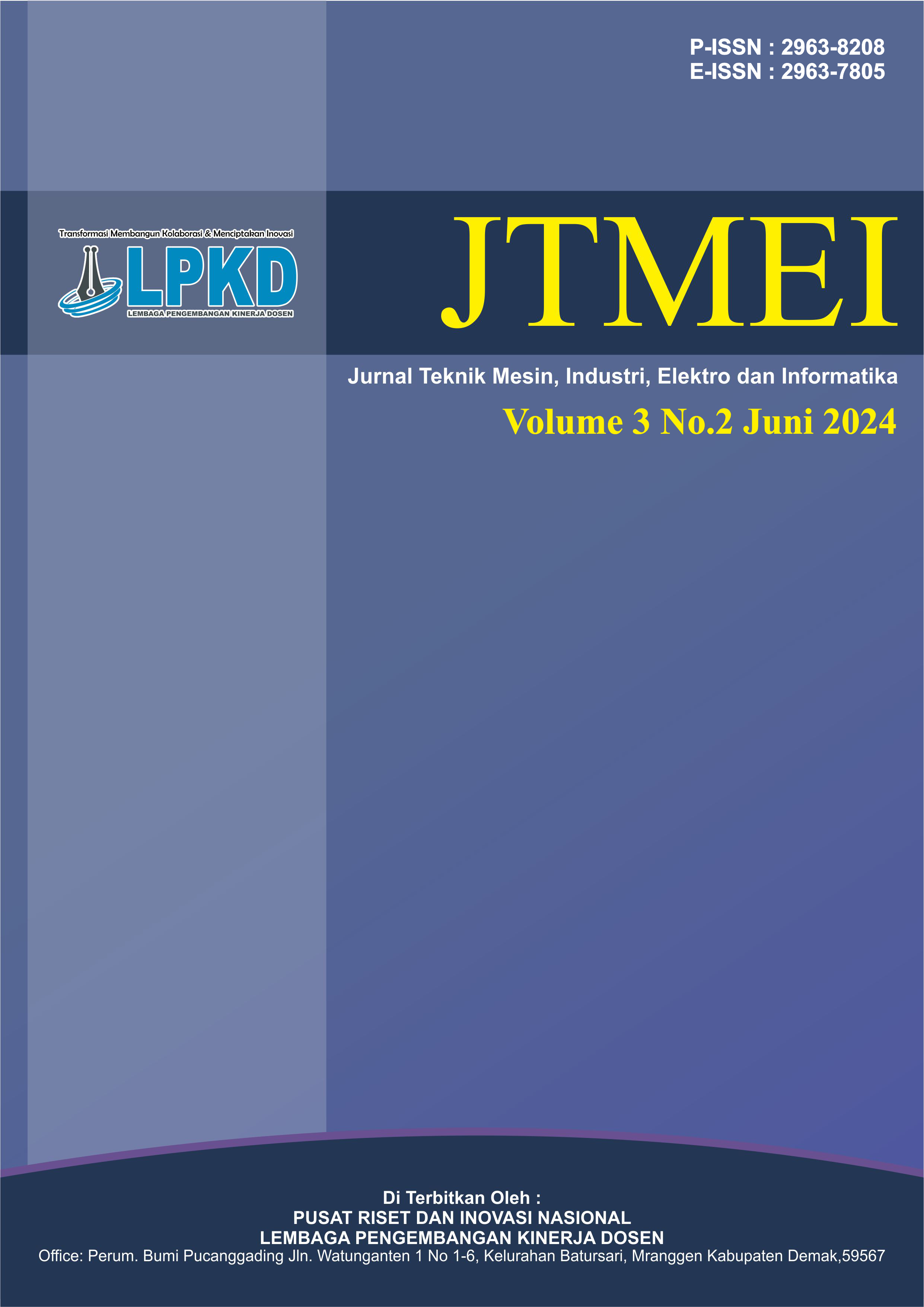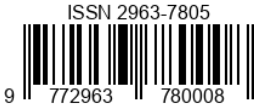Rancang Bangun Alat Pemilah Ikan Berbasis Internet Of Things (IoT)
DOI:
https://doi.org/10.55606/jtmei.v3i2.3768Keywords:
Fish Sorter, fishing vessel, Internet of Things (IoT), Research and Development (R&D), google spreadsheetAbstract
Mochamad Andri Prassetyo, Design of Fish Sorter Equipment Based on INTERNET of THINGS (IoT). Supervised by Henna Nurdiansari, S.T., MT., M.Sc. and Kuntoro Bayu Ajie, S.Kom., MT. According to data compiled by the Ministry of Maritime Affairs and Fisheries, the amount of fish produced by Indonesian seas has reached 12.01 million tonnes in 2022. The enormous potential of Indonesian marine products forces the need for technological intervention to help reduce production costs. Improving the quality of the products produced. One of the processes that requires technological intervention is the process of sorter fish that have been caught by fishing vessels and then having to be regrouped according to the weight of the fish. By adopting sophisticated technology and systems in the modern fisheries market, efforts to achieve efficiency and reduce the risk of human error can be increased. Internet of Things (IoT) is a technological concept that has the ability to connect and facilitate the communication process between machines, devices, sensors and humans via the internet network.
After conducting Research and Development (R&D), designing an Internet of Things-based fish sorting tool could become a new technology that can increase product efficiency by designing a system, designing tools and testing plans for sorting fish based on measuring the weight of the fish.
Based on the test results, it can be concluded that the design of an Internet of Things-based fish sorting tool can detect fish entering the container that has been prepared through component testing and after testing the entire tool, data on the results of weight measurements on fish using the fish sorting system can be sent to Google Spreadsheet. So that the data can be accessed publicly by sending a predetermined link.
Downloads
References
Ardiyani, W. J., Iskandar, B. H., & Wisudo, S. H. (2019). Estimasi jumlah kapal penangkap ikan optimal di WPP 712 berdasarkan potensi sumber daya ikan. ALBACORE Jurnal Penelitian Perikanan Laut, 3(1), 95-104.
Fernando, D. (2018, November). Visualisasi data menggunakan Google Data Studio. In Prosiding Seminar Nasional Rekayasa Teknologi Informasi | SNARTISI (Vol. 1).
Kementerian Kelautan dan Perikanan Republik Indonesia. (2012). Peraturan Menteri Kelautan dan Perikanan Republik Indonesia No. 30 Tahun 2012 tentang usaha perikanan tangkap di wilayah pengelolaan perikanan negara Republik Indonesia. Jakarta: KKP.
Konservasi perairan sebagai upaya menjaga potensi kelautan dan perikanan Indonesia. (2023, July 4). Retrieved from https://kkp.go.id/djprl/artikel/21045-konservasi-perairan-sebagai-upaya-menjaga-potensi-kelautan-dan-perikanan-indonesia
Latifa, U., & Saputro, J. S. (2018). Perancangan robot arm gripper berbasis Arduino Uno menggunakan antarmuka LabVIEW. Barometer, 3(2), 138-141.
Nadeak, R. (2022). Rancang bangun tabungan uang kertas dengan autentikasi sidik jari berbasis Internet of Things (Doctoral dissertation, Universitas Nasional).
Prabowo, D. M. (2018). Analisis pengaruh kecepatan dan massa beban pada conveyor belt terhadap kualitas pengemasan dan kebutuhan daya dan arus listrik di bagian produksi PT. Indopintan Sukses Mandiri Semarang (Doctoral dissertation, Universitas Muhammadiyah Semarang).
Prakarsa, F. B., & Edidas, E. (2022). Rancang bangun alat sortir panen ikan lele berbasis Arduino UNO R3. Jurnal Pendidikan Tambusai, 6(1), 1202-1218.
Puspitasari, A. F. (2014). Identifikasi dan prevalensi cacing ektoparasit pada ikan kembung (Rastrelliger sp) di Pelabuhan Perikanan Nusantara Brondong, Lamongan (Doctoral dissertation, Universitas Airlangga).
Ramadhani, A. (2020). Pengering biji kopi dengan kontrol suhu berbasis logika fuzzy (Doctoral dissertation, Universitas Komputer Indonesia).
Saksono, H. (2013). Ekonomi biru: Solusi pembangunan daerah berciri kepulauan studi kasus Kabupaten Kepulauan Anambas. Jurnal Bina Praja: Journal of Home Affairs Governance, 5(1), 1-12.
Wati, D. A. R. (2020). Rancang bangun sistem penyortir dan penghitung bibit ikan lele berbasis Arduino.
Yusri, M., Maulana, A., Fitriati, A., & Nur, M. (2022). Rancang bangun sistem sortir ikan berdasarkan berat berbasis PLC. Mechatronics Journal in Professional and Entrepreneur (MAPLE), 4(2), 48-53.
Downloads
Published
How to Cite
Issue
Section
License
Copyright (c) 2024 Jurnal Teknik Mesin, Industri, Elektro dan Informatika

This work is licensed under a Creative Commons Attribution-ShareAlike 4.0 International License.








